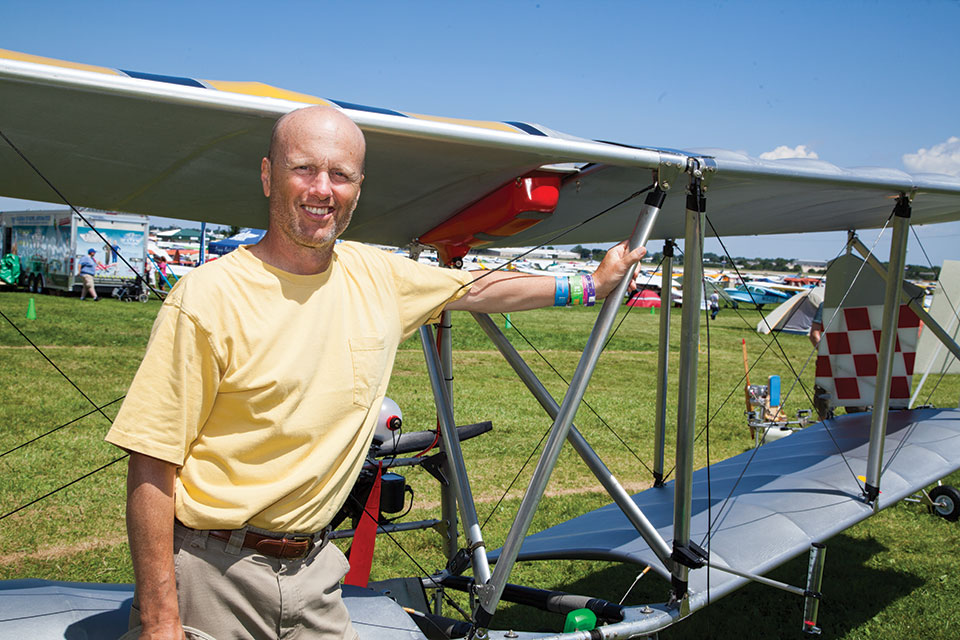Easy Riser Is the Ultralight That Started It All
By Randy Dufault
July 27, 2017 - John Moody shocked the aviation world when he added a go-kart engine to his biplane hang glider. While some questioned the veracity of such an idea, his action ultimately helped build Part 103 of the FARs, and drove the veritable explosion of sport aviation that followed.
John called his creation the Easy Riser, and it quickly became one of the dominant designs of the era. In fact, Easy Risers were the only powered glider type shown at the 1977 EAA convention. Eighteen-year old Eric Wallner of Dodgeville, Wisconsin, attended that convention with his uncle and was so impressed, he immediately ordered a kit.
“I bought my first kit from John Moody,” Eric said. “I was his 17th customer, and I think he sold 900 of these things.”
Eric brought the completed craft to the 1978 and 1979 conventions. At virtually the same time, he purchased and built another one, which was used to fly over events and advertise a Milwaukee radio station.
“It took me two weeks to build,” Eric said of the second airplane. “It was a crash [rush] project, and I had to get it done before the flying season.”
Eric flew 110 flights over four years for the radio station and earned money that, for a person his age at the time, was pretty good.
Known in 1986 as one of the world’s most experienced Easy Riser pilots, Eric teamed up with Larry Mauro of Ultralight Flying Machine. Larry had taken over sales of Easy Riser kits and was ready to incorporate some changes that both Eric and he believed would improve the airplane.
“I built the prototype, and this is it,” Eric said, while standing next to his silver Easy Riser here at EAA AirVenture Oshkosh 2017.
Completed 31 years ago in 1986, the craft incorporates streamline struts and used a standard aircraft covering system in lieu of the dress-lining fabric popular with most Easy Riser builders.
Eric flew the plane for about 100 hours over the next 10 years, including a visit to the 1992 EAA Convention, and a memorable four-hour and five-minute soaring flight where the engine ran for less than an hour. Soaring is very much his passion, and Eric takes every opportunity he can to silence the engine.
Unfortunately, life events caused Eric to box up the biplane in 1996.
“I pulled it out of the box and washed it off,” he said of 2016 when he decided to bring his third Easy Riser back to life. “I couldn’t believe how well the Ceconite fabric and the butyrate dope with the aluminum paste in it had held up.”
However, a 31 year-old engine would not do.
“I had been coming up to [EAA AirVenture] for many years and was looking at the little motors on the backpacks of powered parachutes,” Eric said. “They were these beautiful little gems.”
Ultimately, he purchased an Austrian manufactured EOS 100 engine and modified the airframe to hold it. Substantially quieter operation is one advantage of the new installation.
Another change Eric desired was the addition of landing gear wheels. Looking for a solution that was lightweight and worked well on grass and on pavement, Eric settled on three wheels designed for a high-end child’s stroller.
Eric’s classic Easy Riser is parked just east of the Ultralight Barn.

